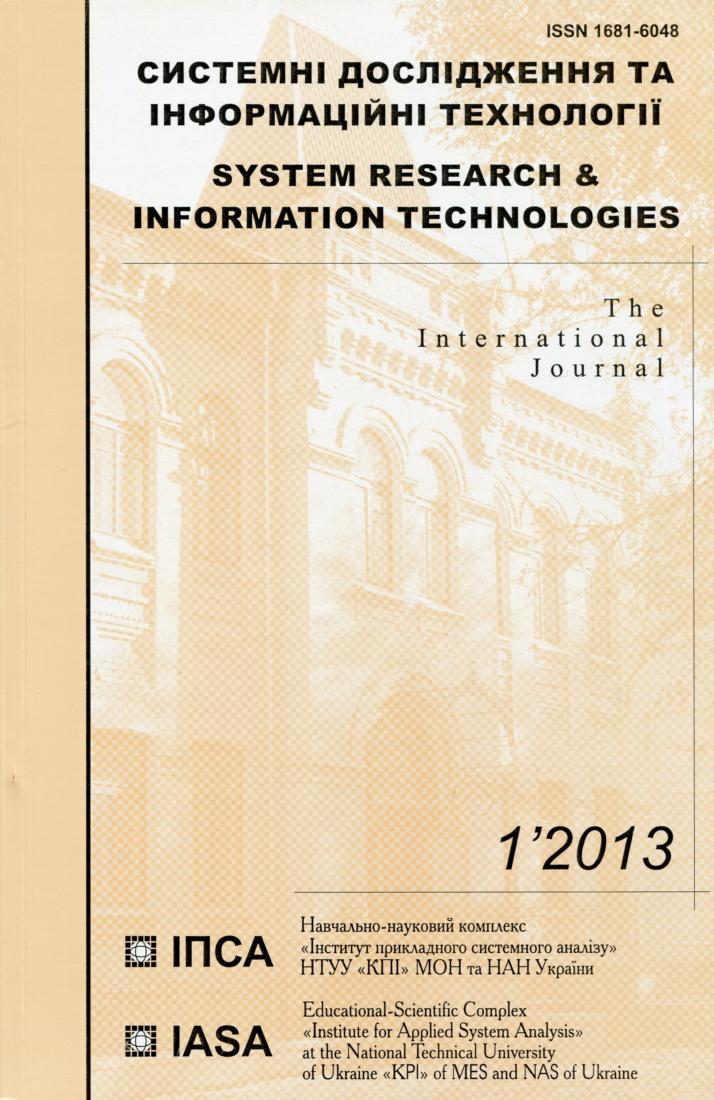Classifications of the operators of one discrete anticipatory system of first order
Abstract
Modeling of the computing systems with anticipation belongs to modern direction of mathematical modeling of the variety of social-economical and ecological processes. By using them it is convenient to formalize such models as population interactions, conflicts over scarce resources, crowd movement and so on. In this modeling field, ones focused lately on the construction and investigation of new anticipatory models for the artificial neuron networks, cellular automata etc. Paper is devoted to classification of the operators of discrete quadratic strong anticipatory system with first order anticipation in the control parameter space. We get the sufficient condition for an appearance of the attractor with a self-similar structure of such kind which can be considered as fractals. During investigation we use Lamerey's diagrams and developed multithreads software. Significant applied interest performs the getting of the dependences between fractal dimensions of the attractors and control parameters.References
Rosen Robert. Anticipatory systems. Philosophical, mathematical and methodological foundations. — NY: Pergamon Press. — 1985. — P. 436.
Dubois Daniel M. Computing anticipatory systems with incursion and hyperincursion // Computing ANTICIPATORY SYSTEMS: CASYS’97, First international conference. edited by Daniel M. Dubois, Published by the american institute of physics, alp conference proceedings 437. — 1998. — P. 3–29.
Dubois D.M. Boolean soft computing by non-linear neural networks with hyperincursive stack memory // Invited paper in computing intelligence: Soft computing and fuzzy-neuro integration with applications, Edited by Okayay Kaynak, Lotfi A. Zadeh, Burhan Turksen, Imre J. Rudas, NATO ASI Series, Series F: Computer and system science. — 1998. — 162. — Springer-Verlag. — P. 333–351.
Burke M.E. Properties of derived scalar anticipatory systems // Computing anticipatory systems: CASYS’l. — 2002. — 627. – P. 49–58.
Mark E. Burke. Scalar Weak anticipatory systems, computing anticipatory systems: CASYS 2001. — Fifth international conference, Conf. Proc. — 2001. — 627. — P. 85–94.
Makarenko A. Toward decision-making considerations on the base of society models with anticipation. Proceed. third int. conf. human centered process, June 2008, Delft, The Netherland, Ed.: Telecom Bretagne. — 2008. — P. 25–34.
Makarenko A., Goldengorin B., Krushinskii D. Game "Life" with anticipation property. Lecture notes computer science, № 5191, Springer, Berlin-Heidelberg. — 2008. — Р. 77–82.
Krushinski D., Makarenko A. Cellular automata with anticipation: examples and presumable applications // Computing anticipatory systems, AIP Conf. Proceed. Series. ed. D. Dubois. — 2010. — 1303. — P. 246–254.
Lazarenko S., Makarenko A. Investigation of Complex Multivalued Solutions in Discrete Dynamical Systems with Anticipation // Book of Abstract 10th. International Conference on Computing Anticipatory Systems: CASYS’11. — Liege, 8–13 August, 2011. — P. 2.

